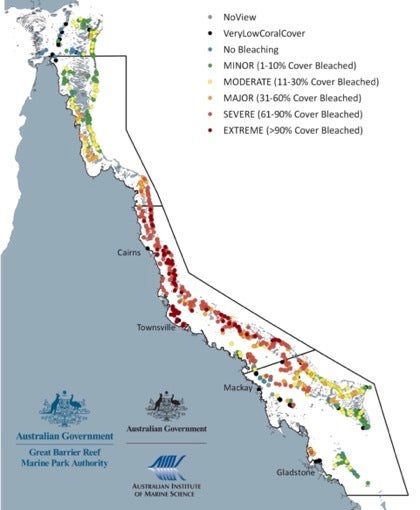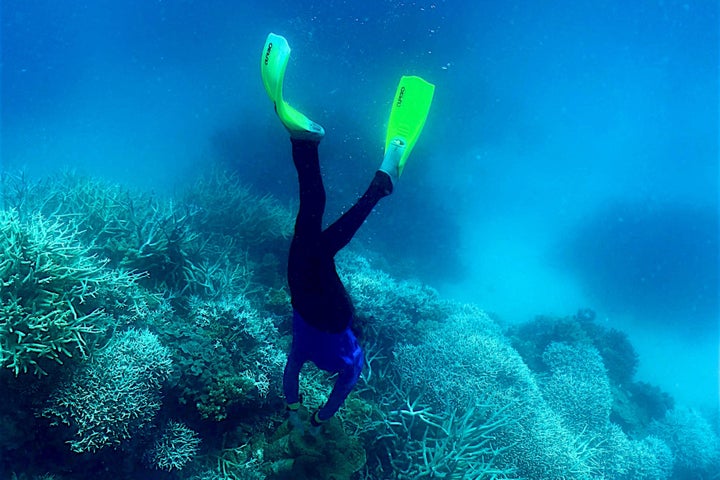SYDNEY ― More than 90% of coral reefs surveyed along Australia’s Great Barrier Reef were bleached in recent months due to catastrophically warm ocean temperatures, according to a new report by the top government agency monitoring the structure’s health.
The Great Barrier Reef Marine Park Authority released its “Reef Snapshot” report Tuesday after conducting aerial surveys of the structure following reports it was suffering from mass bleaching earlier this year. Researchers monitored 719 reefs along the eastern coast of Australia, saying 654 of those showed signs of at least some bleaching. Many of those were classified as severely or extremely bleached.
“The Great Barrier Reef’s waters warmed early in December 2021, exceeding historical summer maximums that typically occur in the hottest summer months,” the agency said in a release this week. “This prolonged heat exposure led to a mass bleaching of coral across the Great Barrier Reef; the fourth to occur in seven years. Unusually, this was the first mass bleaching event to occur under La Niña conditions.”
The marine park authority said Tuesday that scientists had observed some severe bleaching along some surveyed sights, including “completely white colonies” and coral death in areas hit hardest by the warm oceans.
The marine park authority first said in March that the iconic structure was undergoing another devastating mass bleaching event, the fourth since 2016, due to abnormally warm ocean temperatures. It’s the first time, however, that a mass bleaching has happened during a La Niña year, when the ocean is supposed to be cooler than usual.
Bleaching happens most often when corals are effectively cooked by warmer than usual water, which causes the delicate polyps to turn a sickly white. They can recover if temperatures stabilize, but if the warm water lingers for too long, huge swaths of the reef can die.

The report was quietly published Tuesday night, a week after The Sydney Morning Herald reported the document had been delayed until after Australia’s federal election. The Great Barrier Reef Marine Park Authority maintained at the time the decision had nothing to do with politics, although scientists and environmentalists criticized the agency for not publishing the findings sooner.
The agency’s chief scientist, David Wachenfeld, said there was hope the bleaching wouldn’t lead to widespread death of corals.
“The early indications are the mortality won’t be very high so we are hoping that we will see most of the coral that is bleached recover, and we will end up with an event rather more like 2020 where yes there was mass bleaching but there was low mortality,” Wachenfeld told the Australian Broadcasting Corporation.

But reef advocates have stressed that any mass bleaching event is devastating news.
“This was a La Niña year, normally characterized by more cloud cover and rain,” Lissa Schindler, a campaign manger for the Australian Marine Conservation Society, told The Guardian. “It should have been a welcome reprieve for our reef to help it recover … This is not normal and we should not accept that this is the way things are.”
Australian Prime Minister Scott Morrison has faced fierce criticism for failing to address climate change, instead throwing his support behind the coal and mining industries. The country has pledged to spend more than $2 billion to protect the structure, but advocates say that figure fails to address the root cause of its demise: our rapidly warming world.
Scientists had hoped the season would give corals walloped by frequent bleaching time to recover, but they said the latest event was a “grim” sign for the future of the reef. Instead, some warned that the next strong El Niño summer — when waters are hotter than usual — would be “awful” for the reef.

